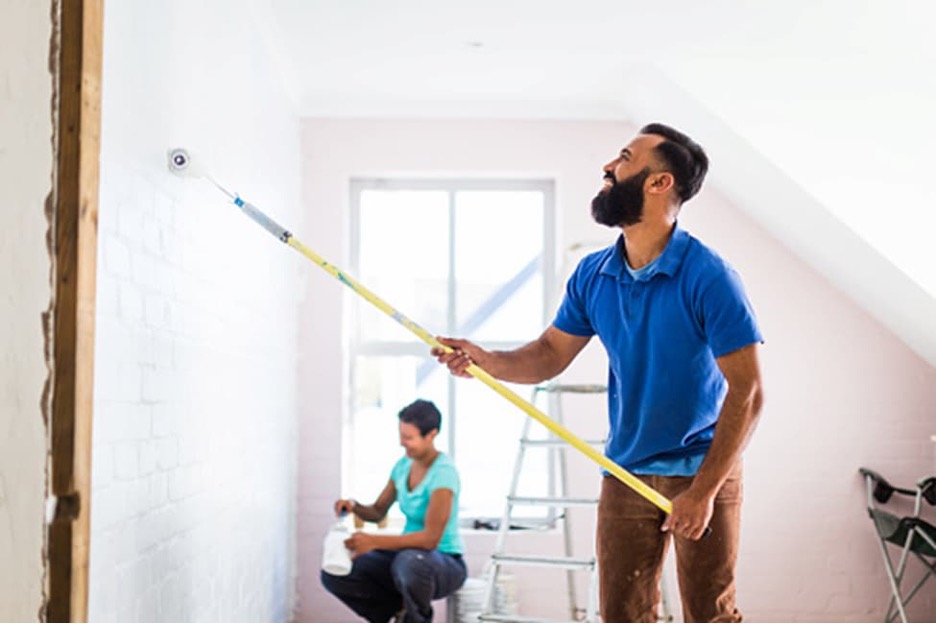- Insurance resources
- Home Insurance Resources
- What is the 80% rule for home insurance
What is the 80% rule for home insurance?
Understanding how the 80% rule works can make sure your home isn't underinsured if there's a loss and can help you avoid penalties.

When it comes to insuring your home, the 80% rule is an important guideline to keep in mind. This rule suggests you should insure your home for at least 80% of its total replacement cost to avoid penalties for being underinsured.
But what exactly is total replacement cost, what does it have to do with the 80% rule, and what should you know about both?
Frequently asked questions about the 80% rule for home insurance
What is total replacement cost?
Most standard home insurance policies include Replacement Cost Coverage for your home and other structures, like an attached garage.
Replacement Cost means if there's a covered loss, your insurance company will pay to rebuild your home using materials purchased at current costs, up to your policy limits.
It's important to insure your home for at least 80% of its replacement cost. Why? Because if you have a loss and your home is insured for less than 80% of its replacement cost, your insurance company may cover less than the full amount of your claim.
Note that insuring your home for 80% of its replacement value is a general guideline. Some insurance companies may require higher percentages and/or have built-in features to account for increased replacement costs due to inflation.
Example
Let's say you buy a home insurance policy
- Home value: $300,000
- Home insurance policy limits: $240,000 (80% of replacement cost)
Over the years, you make major home improvements
- Increased value: $100,000
- New home value: $400,000
- You increase your policy limits to: $320,000 (80% of replacement cost)
By keeping your homeowners insurance policy up to date, you have enough coverage to rebuild at current costs if you have a loss.
But what happens if you don't update your homeowners policy? Let's use the same example
- New home value: $400,000
- Home insurance policy limits: $240,000 ($80,000 less than required to be at 80%)
This is important because in the event of a covered claim (not just in the case of a total loss) the insurance company calculates payment based on the percentage of coverage you have, divided by the amount that would be required to be at 80%
- $240,000(what you have)/$320,000(80%) = 75%
Let's say you have a loss of $50,000. In this scenario (not being covered for 80% of your total home's value) your insurance would pay just 75% of the damage, which equals $37,000 (minus any deductible)1.
Is replacement cost value the same as market value?
No. The market value of a house is what a buyer pays to buy a home and the property it's on in its current condition.
Market value differs from replacement cost value in that a home's replacement cost value reflects things like the current cost of building materials, labor costs, location, and the cost of similar houses in the local housing market. Please note, land isn't part of a home's replacement cost value.
How can I avoid co-insurance penalties?
To avoid co-insurance penalties for underinsuring your home, it's important that you insure it for at least 80% of its total replacement cost value. To help, make sure you ask yourself these questions.
- Have you made any major improvements to your home this year? These can include things like a kitchen or bath remodel, upgrading your roof, siding,windows, or adding a new room or garage.
- Does your home's replacement cost value account for expenses associated with rising building material and labor costs?
- Is the replacement cost value of your home reflective of inflation?
As a homeowner, you should periodically review your home insurance policy and home replacement cost value to see if your coverage is enough and you're not underinsured.
What are some of the other factors to consider when insuring my home?
In addition to having proper total replacement cost limits on your home in the event of a covered loss, you should also consider
- Your homeowners insurance deductible. If you have a loss, your deductible must be paid before the insurance company covers your claim costs. Do you need to make any adjustments to your home insurance policy's deductibles?
- Other structures. The term other structures on a home insurance policy generally refers to a detached garage, fences, driveway, storage and garden sheds, etc. Have you made any changes/additions to other structures on your property that need to be addressed with your agent?
- Personal property. Have you recently purchased valuable artwork? Did you acquire any collectible items, sports memorabilia, jewelry, or antiques.
- Your location. If you live in an area that is prone to natural disasters, you likely need additional coverage for your home. If you have earthquakes, floods, or other types of special insurance for your home, it's important to review your policy's replacement cost limits and deductibles to make sure they're still enough.
If your home's contents have changed, you should talk to your insurance agent about increasing your home policy's personal property value, and maybe even schedule certain items on your policy to ensure they are properly covered in the event of a loss.
Related content
Begin your free online quote
Please note: Information presented on this page is intended to be general information about insurance and is not specific to Liberty Mutual policies. Policies and coverages vary by state and insurer. Contact your insurance company to understand specifics regarding your policy and coverages.